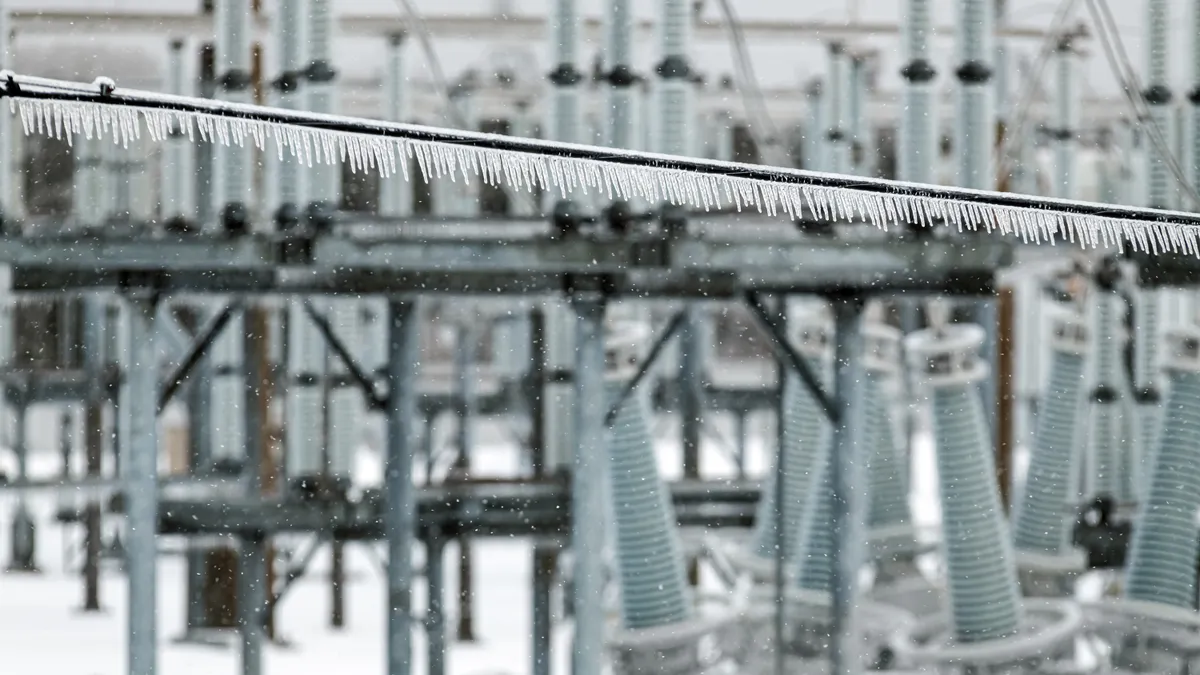Dive Brief:
-
The Federal Energy Regulatory Commission Thursday approved two extreme cold weather reliability standards for U.S. generators in response to Winter Storm Uri in 2021 when about 4.5 million Texans lost power because power plants were unable to run.
-
FERC approved the standards proposed by the North American Electric Reliability Corp. even though they included “undefined terms, broad limitations, exceptions and exemptions and prolonged compliance periods.” FERC ordered NERC to address those issues within a year.
-
FERC also directed NERC to monitor and assess power plant owners’ implementation of the new requirements. NERC is preparing to propose a second set of cold weather standards late this year to address remaining recommendations from the FERC-NERC inquiry into Winter Storm Uri.
Dive Insight:
The just-approved reliability standards come less than two months after widespread power plant outages during Winter Storm Elliott, including outages by Duke Energy and the Tennessee Valley Authority in the Southeast.
The Midcontinent Independent System Operator reported it had 50,000 MW in unplanned power plant outages during the late-December cold snap. About 45,950 MW, or 23% of PJM’s generating fleet, was unexpectedly offline on Dec. 24 while ISO New England had about 2,275 MW in unplanned outages that day.
One standard addresses emergency operations. FERC said it will improve how transmission operators account for the overlap of manual load shed and automatic load shed in their emergency operating plans while addressing the need to minimize the use of manual load shed that could make emergencies worse and threaten system reliability.
The other standard covers extreme cold weather preparedness and operations. The standard requires generator owners to put in place freeze protection measures, develop enhanced cold weather preparedness plans, conduct annual training and implement corrective action plans to address freezing issues.
Generators must also provide certain cold weather operating parameters to reliability coordinators, transmission operators and balancing authorities for their analysis and planning, FERC said.
“We believe that these measures begin to address many of the issues identified as contributing to generating unit failures during extreme cold weather conditions,” FERC said.
NERC’s proposed weatherization requirements were “not up to the task,” FERC Commissioner Allison Clements said during the agency’s monthly meeting, noting the harm caused during Winter Storm Uri, with at least 210 deaths in Texas and up to $130 billion in losses there.
The proposal, for example, requires power plant owners to weatherize generators so they can operate for one hour in extreme cold temperatures beginning in April 2027, she noted.
“Yes – one hour – in 2027, over four years from now,” Clements said. “Needless to say, that doesn’t bring comfort that we can get through a multi-day winter event like Winter Storm Uri, and waiting for four additional winters before weatherization requirements kick in does not reflect the urgency we feel.”
FERC said the one-hour requirement was too short and ordered NERC to extend it, but was not specific.
FERC rejected arguments by the Electric Power Supply Association, the PJM Power Providers Group and Invenergy that the agency and NERC lack the authority to set some of the requirements in the standards.
Also, FERC said concerns about how generators would recover their costs in meeting the standards was outside the scope of the proceeding.















